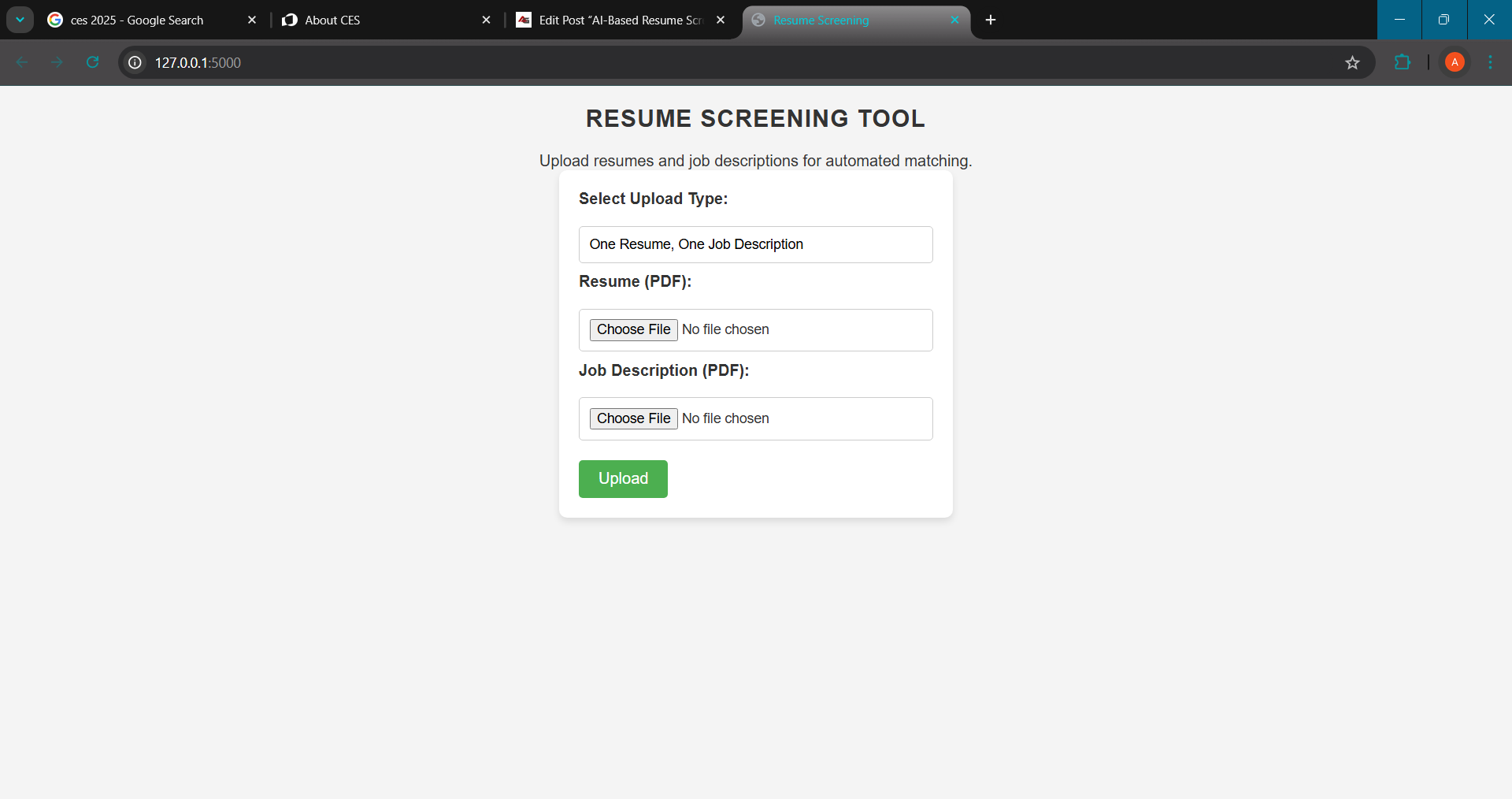Hiring the right talent is like finding a needle in a haystack. Resumes flood inboxes, job descriptions pile up, and recruiters are left with the mammoth task of aligning the two. Enter the AI-Based Resume Screening System, a solution crafted to take the guesswork out of recruitment.
In this blog, I’ll take you through how this system works, the technologies behind it, and why it’s a game-changer for hiring professionals.
The Problem: A Modern Recruitment Bottleneck
In today’s fast-paced hiring landscape, recruiters don’t just need candidates—they need the right candidates, and they need them fast. Traditional resume screening, no matter how skilled the recruiter, can only achieve so much. Bias creeps in, patterns are overlooked, and time is wasted sifting through irrelevant profiles.
This challenge inspired the development of the AI-Based Resume Screening System, a tool designed to bridge the gap between job descriptions and resumes using advanced AI technologies.
The Solution: How AI Steps Up
At its core, this system is about relevance. How well does a resume align with a job description? But here’s the kicker: it doesn’t just rely on one technique. It uses a multi-pronged approach with:
- TF-IDF for keyword importance.
- Word2Vec for semantic understanding.
- BERT embeddings for contextual awareness.
- Q-learning, a reinforcement learning model, to get smarter with each interaction.
These techniques ensure that every resume is evaluated not just for surface-level matches but for deeper, meaningful connections to the role in question.
Key Features That Make It Stand Out
The system caters to different scenarios, making it versatile for recruiters and job seekers alike:
1. One Resume, One Job Description
Upload a single resume and a job description, and the system provides a compatibility score—perfect for candidates tailoring their applications for specific roles.
2. Multiple Resumes, One Job Description
For recruiters, this feature ranks a pool of resumes against a job description, streamlining the shortlisting process.
3. One Resume, Multiple Job Descriptions
Candidates can discover their best-suited opportunities by analyzing how their profile matches up to different job roles.
Behind the Scenes: The Tech That Powers It
The magic lies in its tech stack—a combination of tried-and-tested tools and cutting-edge AI models:
- Python drives the backend development.
- TensorFlow/PyTorch powers the deep learning components.
- Hugging Face Transformers bring in the sophistication of BERT for contextual embeddings.
- Gensim is the go-to library for Word2Vec.
- Scikit-learn takes care of TF-IDF and cosine similarity calculations.
- Q-learning introduces an adaptive edge, continuously improving ranking accuracy based on recruiter feedback.
The AI Workflow: From Text to Insights
Here’s how the system transforms resumes and job descriptions into actionable insights:
- Preprocessing: The system cleans and standardizes the text, making it machine-readable.
- Feature Extraction:
TF-IDF captures the importance of words in the text.
Word2Vec dives deeper, understanding the semantic relationships.
BERT provides contextual embeddings, capturing the nuances of language. - Cosine Similarity: This metric measures how closely resumes align with job descriptions in vector space.
- Reinforcement Learning: The Q-learning model adds a layer of personalization, learning from previous rankings to refine future recommendations.
A New Way to Rank Resumes

The system doesn’t just spit out scores; it categorizes resumes into intuitive ranking tiers:
- Excellent Match: The ideal candidate for the role.
- Good Match: A strong contender worth considering.
- Average Match: Might fit with some adjustments.
- Poor Match: Likely unsuitable for the role.
This hierarchy empowers recruiters to make quick, confident decisions.
Why This Matters
In a world where time is money, this system isn’t just about saving hours—it’s about unlocking opportunities. By automating the tedious parts of recruitment, it allows recruiters to focus on what truly matters: connecting with the best talent.
For job seekers, it provides actionable feedback on where they stand, enabling smarter applications.
Getting Started
Want to try it out? The system is easy to set up and use:
- Clone the repository and install the dependencies.
- Download pre-trained models like Google’s Word2Vec.
- Start ranking resumes against job descriptions in seconds!
Whether you’re a recruiter aiming to streamline hiring or a candidate looking to target your applications better, this tool is here to help.
The Future of Hiring Is Here
The AI-Based Resume Screening System isn’t just a tool; it’s a glimpse into the future of recruitment. It shows how AI can empower us, not replace us—taking the drudgery out of hiring while enhancing decision-making.
Are you ready to embrace this AI-driven transformation? Share your thoughts below or reach out to collaborate on making this even better.

